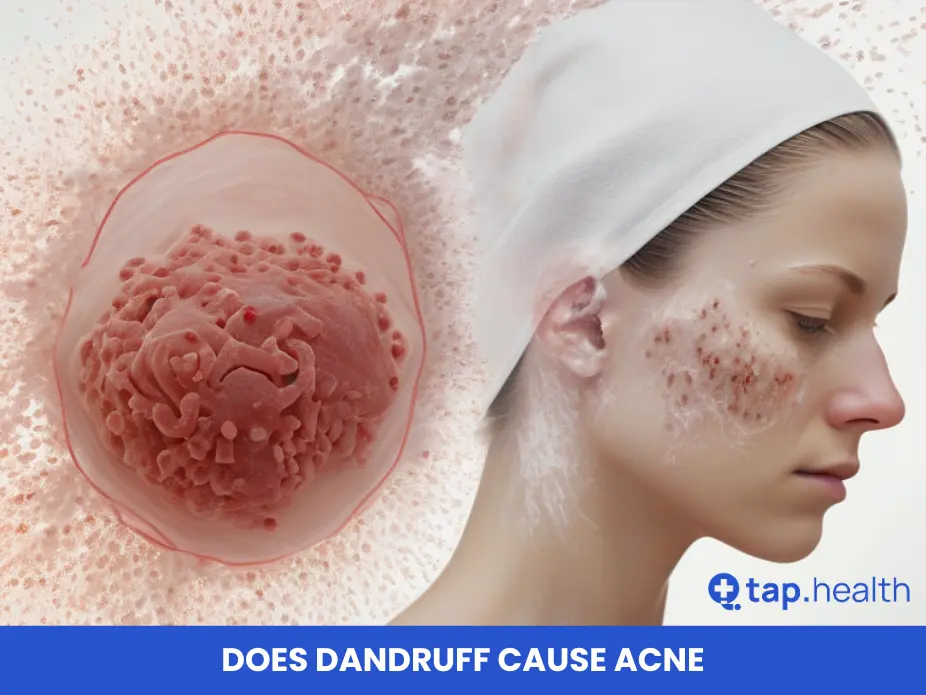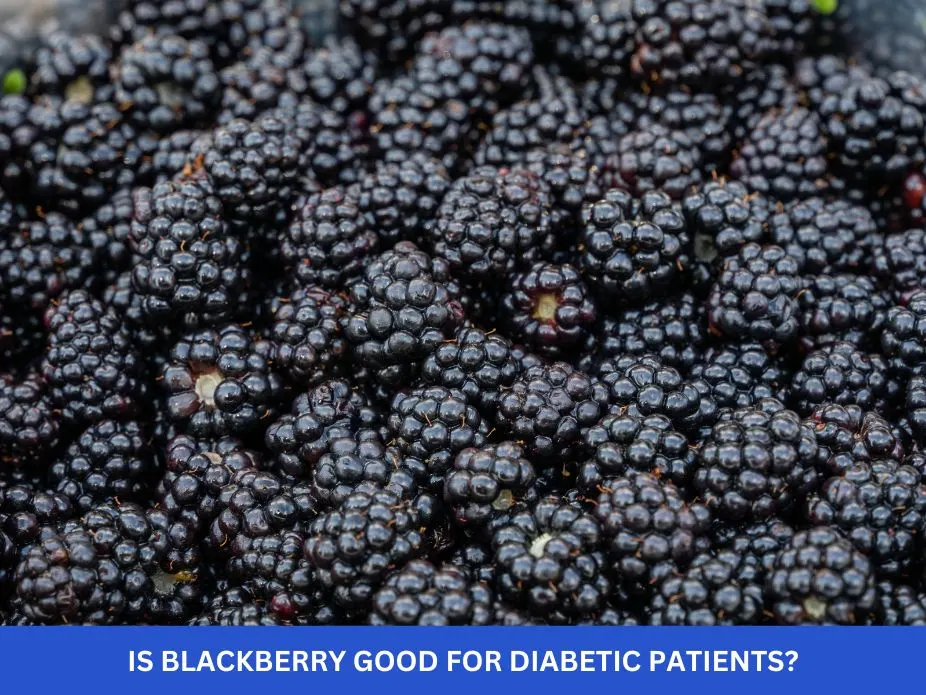Acne and dandruff are two common skin conditions that many people experience at some point in their lives. While they affect different parts of the body—acne on the face and dandruff on the scalp—there is a connection between the two that can make managing skin health a bit more challenging. This article will explore how dandruff can contribute to acne, what you can do to prevent it, and tips for managing both conditions effectively.
What is Dandruff?
Dandruff is a condition characterized by the shedding of white or yellow flakes of dead skin from the scalp. It can be caused by several factors, including dry skin, sensitivity to hair care products, and the overgrowth of a yeast-like fungus called Malassezia. This fungus is naturally present on the scalp but can become problematic when it grows out of control, leading to inflammation and excessive skin cell turnover.
Common Symptoms of Dandruff
- Flaky Scalp: White or yellow flakes of skin that fall off the scalp.
- Itching: Persistent itchiness that can lead to scratching.
- Redness: Inflammation of the scalp, often seen as red patches.
What is Acne?
Acne is a skin condition that occurs when hair follicles become clogged with oil (sebum) and dead skin cells. This blockage can lead to the formation of pimples, blackheads, whiteheads, and sometimes cysts. Acne is most commonly found on the face, chest, and back, and it can range from mild to severe.
Common Causes of Acne
- Excess Sebum Production: Oily skin can clog pores, leading to acne.
- Bacteria: Propionibacterium acnes (P. acnes) is a bacteria that can cause inflammation in clogged pores.
- Hormonal Changes: Hormones, particularly during puberty, menstruation, or pregnancy, can increase sebum production.
- Diet and Lifestyle: Certain foods, stress, and lack of proper skincare can contribute to acne.
Also read this – 30 Days Acne Free Diet Plan for Clearer Skin
The Connection Between Dandruff and Acne
While dandruff itself doesn’t directly cause acne, there are several ways in which the two conditions can be related. Understanding this connection can help in managing both conditions more effectively.
1. Irritation and Inflammation
Dandruff can cause significant irritation and inflammation on the scalp. When dandruff flakes fall onto the forehead, temples, or other areas of the face, they can irritate the skin. This irritation can lead to inflammation, making the skin more prone to acne breakouts. In some cases, the inflammation caused by dandruff can even trigger acne in individuals who are already susceptible to it.
2. Excess Oil Production
People with dandruff often have oily scalps, as the overproduction of sebum is one of the causes of dandruff. This excess oil can easily transfer from the scalp to the face, especially in areas like the forehead. When this oil mixes with dead skin cells and bacteria, it can clog pores, leading to acne. The combination of an oily scalp and forehead can create a breeding ground for acne breakouts.
3. Spread of Bacteria
Scratching a dandruff-affected scalp can transfer bacteria from the scalp to the face. When you scratch, you may also inadvertently spread Propionibacterium acnes (P. acnes), the bacteria associated with acne. This can exacerbate acne breakouts, particularly in areas close to the scalp, such as the forehead and temples.
4. Hair Products and Acne
Many people with dandruff use specialized shampoos and hair products to manage the condition. While these products are often effective at controlling dandruff, they can sometimes irritate the skin on the face. For example, ingredients like sulfates, found in some anti-dandruff shampoos, can be harsh and lead to skin irritation. If these products come into contact with the facial skin, they may contribute to acne.
Does Dandruff Cause Acne?
While dandruff doesn’t directly cause acne, it can contribute to acne development in a few indirect ways:
1. Irritation and Inflammation
Dandruff often leads to an itchy and irritated scalp. When dandruff flakes fall from the scalp onto the face, especially the forehead and hairline, they can cause additional irritation on the skin. This irritation can trigger inflammation, making the skin more susceptible to acne breakouts. The skin’s response to this irritation may involve increased oil production, which can clog pores and lead to acne.
2. Transfer of Oil
Dandruff is often associated with an oily scalp. The excess oil produced on the scalp can transfer to the forehead and other parts of the face. This oil, when mixed with dirt and dead skin cells, can clog pores and create an environment where acne can thrive. The forehead, being close to the hairline, is particularly vulnerable to this transfer of oil, leading to breakouts in that area.
3. Spread of Bacteria
Scratching a dandruff-affected scalp can spread bacteria from the scalp to the face. This can exacerbate existing acne or trigger new breakouts, especially if the skin is already prone to acne. The bacteria that cause acne (Propionibacterium acnes) can easily spread from the scalp to the face, worsening acne symptoms.
4. Hair Products
Many people with dandruff use specialized shampoos or treatments that contain strong chemicals to control their condition. While these products are often effective for dandruff, they can sometimes irritate the skin if they come into contact with the face. Ingredients like sulfates or other harsh chemicals can aggravate the skin, potentially leading to or worsening acne.
Best Ways to Manage Dandruff and Acne
Managing dandruff and acne simultaneously requires a balanced approach that targets both the scalp and the skin. Below are some of the best methods to help you control dandruff while also preventing acne breakouts.
1. Use Medicated Anti-Dandruff Shampoo
Medicated shampoos are specially formulated to treat dandruff by targeting the root causes, such as the overgrowth of Malassezia fungus or an excessively oily scalp. Look for shampoos that contain active ingredients like:
- Ketoconazole: An antifungal agent that helps reduce the yeast responsible for dandruff.
- Zinc Pyrithione: Helps to slow down the production of skin cells, reducing flaking and itchiness.
- Selenium Sulfide: Controls dandruff by slowing down the growth of skin cells on the scalp.
- Salicylic Acid: Works by exfoliating the scalp, removing excess dead skin cells that contribute to dandruff.
To avoid irritating your facial skin, ensure you thoroughly rinse the shampoo from your scalp, keeping it away from your face. Medicated shampoos can be used 2-3 times a week, depending on the severity of your dandruff.
2. Hot Oil Massages
Hot oil massages can be an effective way to manage both dandruff and acne. Warm oils like coconut oil, olive oil, or tea tree oil can help moisturize a dry scalp and reduce flaking. Tea tree oil, in particular, has antifungal and antibacterial properties, making it beneficial for treating dandruff while also helping to prevent acne breakouts.
To perform a hot oil massage:
- Warm your preferred oil slightly (be careful not to overheat it).
- Massage the oil gently into your scalp using your fingertips.
- Leave the oil on for about 30 minutes, then wash your hair with a mild shampoo.
This treatment can be done once or twice a week. The key is to ensure that the oil is washed out thoroughly to prevent any residual oil from transferring to your face and causing acne.
3. Apply Aloe Vera
Aloe vera is a natural remedy known for its soothing and healing properties, making it an excellent choice for managing both dandruff and acne. Aloe vera helps reduce scalp inflammation, itchiness, and flaking, while its antibacterial properties can help prevent acne.
To use aloe vera:
- Apply pure aloe vera gel directly to your scalp.
- Massage it in and leave it on for 20-30 minutes.
- Rinse it off with a mild shampoo.
For acne, apply aloe vera gel to the affected areas on your face after cleansing. Aloe vera can be used daily on both the scalp and skin.
4. Apple Cider Vinegar
Apple cider vinegar (ACV) is a popular home remedy for both dandruff and acne due to its antifungal and antibacterial properties. ACV can help balance the pH of the scalp, reducing yeast overgrowth, and it also works as a natural astringent for the skin, helping to prevent acne by removing excess oil and tightening pores.
To use apple cider vinegar:
- For dandruff: Mix equal parts of ACV and water and apply it to your scalp after shampooing. Leave it on for a few minutes, then rinse thoroughly.
- For acne: Dilute ACV with water (1 part ACV to 3 parts water) and apply it to your face with a cotton pad after cleansing. Rinse it off after a few minutes and follow up with a moisturizer.
Be cautious with ACV, as it can be strong and may cause irritation if not diluted properly. Start with a weaker solution and gradually increase the concentration as your skin gets used to it.
5. Juice of Lemon
Lemon juice is another natural remedy that can be beneficial for managing dandruff and acne. The acidity of lemon juice helps balance the scalp’s pH, reducing the overgrowth of dandruff-causing fungi. It also acts as an astringent, helping to clear excess oil from the skin and prevent acne.
To use lemon juice:
- For dandruff: Apply freshly squeezed lemon juice directly to your scalp and leave it on for 5-10 minutes before rinsing it off with water. You can also mix lemon juice with a carrier oil like coconut oil to prevent irritation.
- For acne: Apply diluted lemon juice (1 part lemon juice to 2 parts water) to your skin with a cotton pad. Leave it on for a few minutes, then rinse off and follow up with a moisturizer.
Lemon juice can be drying, so it’s essential to use it sparingly and always moisturize afterward. Avoid using lemon juice on your skin before sun exposure, as it can make your skin more sensitive to the sun and lead to irritation.
Busting the Myths: Common Misconceptions About the Dandruff and Acne Connection
Dandruff and acne are two skin conditions that can cause frustration and discomfort. While many people experience both at some point in their lives, there’s a lot of misinformation about how they are connected. Let’s break down some of the most common myths about the dandruff and acne connection and reveal the truth behind these misconceptions.
Myth 1: Dandruff Always Causes Acne
Fact: Dandruff does not directly cause acne. Although there is a connection between the two conditions, dandruff itself is not a cause of acne. However, dandruff can contribute to acne breakouts indirectly by irritating the skin or leading to an overproduction of oil. This irritation or excess oil can clog pores, especially around the forehead and hairline, leading to acne in those areas. But, simply having dandruff does not mean you will automatically have acne.
Myth 2: If You Treat Dandruff, Your Acne Will Disappear
Fact: Treating dandruff can help reduce some factors that contribute to acne, but it won’t necessarily make acne disappear. Acne is a multifactorial condition, meaning it can be caused by a variety of factors including hormones, diet, stress, and genetics. While reducing dandruff can help minimize skin irritation and excess oil production, which may lead to fewer breakouts, it’s not a cure-all for acne. A comprehensive approach that includes proper skincare, a balanced diet, and, if necessary, medical treatment is often required to manage acne effectively.
Myth 3: Dandruff Flakes Are the Main Cause of Acne Breakouts
Fact: Dandruff flakes landing on your skin can contribute to irritation, but they are not the main cause of acne. Acne primarily results from clogged pores due to excess oil, dead skin cells, and bacteria. While dandruff flakes can irritate the skin and potentially worsen existing acne, they are not a primary factor in causing breakouts. The real culprits are usually excess sebum production and bacterial growth within clogged pores.
Myth 4: Anti-Dandruff Shampoos Will Prevent Acne
Fact: Anti-dandruff shampoos are designed to treat the scalp, not the skin on your face. While using these shampoos can help control dandruff and reduce the likelihood of dandruff-related skin irritation, they are not formulated to treat acne. In fact, some anti-dandruff shampoos contain ingredients that may be too harsh for facial skin and could potentially irritate the skin if not used carefully. It’s important to use skincare products specifically designed for acne treatment on your face.
Myth 5: Only People with Oily Skin Get Dandruff and Acne
Fact: While oily skin can contribute to both dandruff and acne, people with dry or combination skin can also experience these conditions. Dandruff can be caused by a variety of factors, including dry skin, a yeast-like fungus, or sensitivity to hair care products. Similarly, acne can affect anyone, regardless of their skin type. It’s essential to recognize that both dandruff and acne are complex conditions that can affect people with different skin types, and managing them requires understanding the specific needs of your skin.
Myth 6: Washing Your Hair More Often Will Prevent Acne
Fact: Washing your hair regularly can help control dandruff and reduce the transfer of oil and flakes to your face, but over-washing can strip your scalp of its natural oils, leading to dryness and irritation. This could potentially make dandruff worse. Additionally, washing your hair too often will not directly prevent acne. The key is to find a balance that works for your scalp and skin type. Using a gentle shampoo and maintaining a consistent skincare routine for your face are more effective ways to manage both dandruff and acne.
Diet Plan for Managing Dandruff and Acne
Day 1
- Breakfast:
- Oatmeal with fresh berries (blueberries, strawberries) and a tablespoon of chia seeds.
- Green tea.
- Mid-Morning Snack:
- A handful of almonds or walnuts.
- Lunch:
- Grilled chicken or tofu salad with mixed greens, cucumbers, tomatoes, and avocado.
- Olive oil and lemon dressing.
- Afternoon Snack:
- Carrot and celery sticks with hummus.
- Dinner:
- Baked salmon or a vegetarian option like lentil stew.
- Steamed broccoli and quinoa.
- Before Bed:
- A small bowl of yogurt with a dash of cinnamon.
Day 2
- Breakfast:
- Smoothie with spinach, banana, unsweetened almond milk, and a tablespoon of flaxseeds.
- Mid-Morning Snack:
- An apple with a tablespoon of almond butter.
- Lunch:
- Whole grain wrap with grilled turkey or chickpeas, lettuce, tomato, and a light spread of avocado.
- Afternoon Snack:
- A pear or a small handful of mixed berries.
- Dinner:
- Stir-fried vegetables (bell peppers, carrots, spinach) with tofu or chicken.
- Brown rice.
- Before Bed:
- A small handful of sunflower seeds.
Day 3
- Breakfast:
- Greek yogurt with mixed nuts, seeds, and a drizzle of honey.
- Mid-Morning Snack:
- A smoothie with kale, pineapple, and coconut water.
- Lunch:
- Quinoa salad with black beans, corn, diced tomatoes, and cilantro-lime dressing.
- Afternoon Snack:
- A small bowl of mixed berries or a banana.
- Dinner:
- Grilled lean steak or a portobello mushroom burger.
- Steamed asparagus and sweet potato mash.
- Before Bed:
- A small handful of pumpkin seeds.
Day 4
- Breakfast:
- Whole grain toast with mashed avocado and a poached egg.
- Herbal tea.
- Mid-Morning Snack:
- A kiwi or a handful of grapes.
- Lunch:
- Lentil soup with a side of mixed greens.
- Afternoon Snack:
- A few slices of cucumber with a dollop of Greek yogurt.
- Dinner:
- Baked cod or a vegetarian chickpea curry.
- Steamed green beans and quinoa.
- Before Bed:
- A small bowl of unsweetened yogurt with a teaspoon of honey.
Day 5
- Breakfast:
- Smoothie bowl with spinach, banana, berries, and topped with nuts and seeds.
- Mid-Morning Snack:
- A handful of unsalted almonds.
- Lunch:
- Grilled chicken or tempeh with a quinoa and spinach salad.
- Afternoon Snack:
- A small bowl of mixed fruit (papaya, mango).
- Dinner:
- Spaghetti squash with marinara sauce and turkey meatballs or a vegan option.
- Steamed zucchini.
- Before Bed:
- A small serving of dark chocolate (70% cocoa or more).
Day 6
- Breakfast:
- Whole grain cereal with unsweetened almond milk, topped with fresh fruit.
- Mid-Morning Snack:
- A smoothie with cucumber, mint, and a green apple.
- Lunch:
- Tabbouleh salad with grilled fish or falafel.
- Afternoon Snack:
- A handful of raw carrots.
- Dinner:
- Grilled shrimp or tofu with a side of roasted vegetables (e.g., bell peppers, zucchini, carrots).
- Brown rice.
- Before Bed:
- A small handful of almonds or walnuts.
Day 7
- Breakfast:
- Scrambled eggs with spinach and whole grain toast.
- Mid-Morning Snack:
- A smoothie with carrots, orange, and ginger.
- Lunch:
- Grilled vegetable sandwich with hummus spread on whole grain bread.
- Afternoon Snack:
- A small handful of dried apricots.
- Dinner:
- Grilled chicken or tofu stir-fry with bok choy and snow peas.
- Quinoa or brown rice.
- Before Bed:
- A small bowl of mixed nuts.
Key Tips:
- Hydration: Drink plenty of water throughout the day to keep your skin and scalp hydrated.
- Limit Sugar and Processed Foods: Avoid foods high in sugar, refined carbs, and unhealthy fats, as they can contribute to inflammation and worsen both dandruff and acne.
- Incorporate Omega-3 Fatty Acids: Foods rich in omega-3s, like salmon, flaxseeds, and walnuts, can help reduce inflammation and support skin health.
- Probiotics: Include foods with probiotics, like yogurt and kefir, to support gut health, which can impact skin condition.
- Balanced Diet: Focus on a balanced diet rich in fruits, vegetables, lean proteins, and whole grains to provide your body with the nutrients it needs to maintain healthy skin and scalp.
When to Consult a Doctor
If you find that dandruff or acne persists despite trying over-the-counter treatments and home remedies for several weeks, it’s important to consult a doctor. Additionally, if you experience severe dandruff with intense itching, redness, or swelling of the scalp, or if your acne is severe, painful, or causing significant scarring, seeking professional medical advice is essential. A doctor can help diagnose any underlying conditions and recommend prescription treatments or specialized care to effectively manage your symptoms.
FAQ: Dandruff and Acne
1.Can dandruff cause acne?
Dandruff itself does not directly cause acne. However, the excess oil and dead skin cells from dandruff can contribute to clogged pores, particularly around the hairline and forehead, potentially leading to acne.
2.Can treating dandruff help improve acne?
Yes, treating dandruff can help reduce acne, especially if the acne is related to oil and flakes from the scalp. Managing dandruff may decrease the likelihood of clogged pores and subsequent breakouts.
3.Is it safe to use anti-dandruff shampoo on acne-prone skin?
Anti-dandruff shampoo is designed for the scalp, and while it’s generally safe, be sure to rinse it thoroughly to avoid residue that could irritate acne-prone skin. It’s best to avoid applying the shampoo directly to your face.
4.Can a poor diet contribute to both dandruff and acne?
Yes, a diet high in unhealthy fats, sugar, and processed foods can worsen both dandruff and acne by increasing inflammation and oil production. A balanced diet with nutrient-rich foods can help manage these conditions.
References
- Mayo Clinic – Comprehensive overview of acne, its causes, and treatments, along with information on managing oily skin. Mayo Clinic.
- National Center for Biotechnology Information (NCBI) – Study on the relationship between scalp conditions and facial acne. NCBI.




